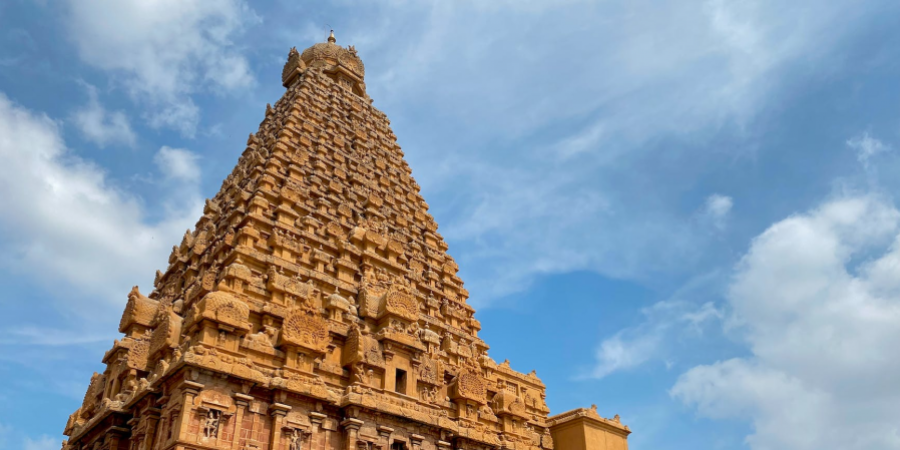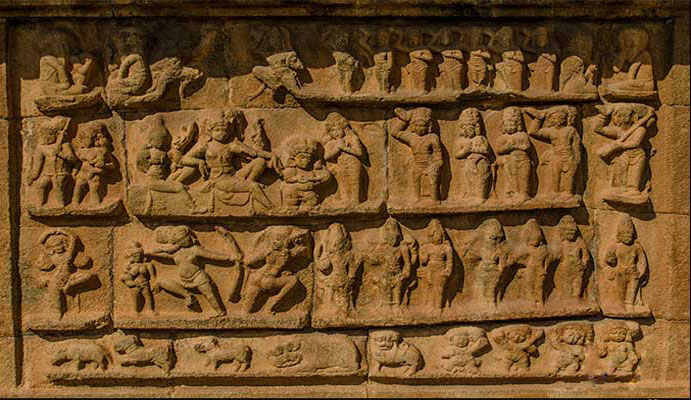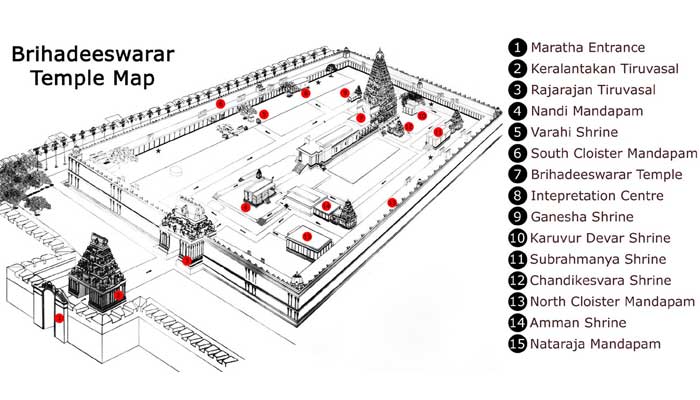

Shiva is the subject of the Hindu temple Brihadeeshwara Temple (Peruvudaiyar Kovil), which is situated in Thanjavur in the Indian state of Tamil Nadu. RajaRajeswara Temple, Periya Kovil, and Rajarajesvaram are additional names for it. It is one of India's biggest temples and a prime example of Dravidian design from the Chola era. The temple celebrated its 1000th anniversary in 2010 after being constructed by Raja Raja Chola I and finished in 1010 AD. The temple is one of the three "Great Living Chola Temples" that are included as a UNESCO World Heritage Site, together with the Airavatesvara and Gangaikonda Cholapuram temples.
The fortified walls around the temple were likely constructed in the 16th century. Vimanam (temple tower) is 216 feet (66 meters) tall.
From the fifth to the ninth century, under the control of the Chalukyas, as shown in Aihole, Badami, and Pattadakal, and later under the Pallava rule, as seen in Mamallapuram and other monuments, a spectrum of dravidian temple styles continued to evolve. Following that, between 850 to 1280, the Cholas arose as the leading dynasty.Early Chola period architecture was less important and more focused on maintaining their geopolitical borders. Within the Chola empire, elements like the multilayered columns with projecting square capitals first appeared in the tenth century. According to George Michell, this marked the beginning of the new Chola style. In terms of scale and detail, the Brihadeshwara temple, which was constructed between 1003 and 1010

The primary temple and its gopurams date from the first half of the eleventh century. Over the subsequent 1,000 years, the temple underwent additional augmentations, updates, and repairs. Raids and conflicts, particularly those between the Hindu monarchs in possession of Thanjavur and the Muslim Sultans who controlled Madurai, inflicted destruction. Hindu dynasties that recovered power repaired these. The monarchs occasionally ordered new murals to be painted over the existing ones in an effort to refurbish the temple with faded artwork. They supported the addition of shrines in other instances. The important Kartikeya (Murugan), Parvati (Amman), and Nandi shrines date from the Nayaka era of the 16th and 17th centuries. The Dakshinamurti temple was also constructed later.Tanjore's Marathas kept up on it well.

The expansive courtyard of the temple complex has a wide pillared and covered veranda (prakara), with a circumambulation-friendly radius of around 450 meters (1,480 feet). There are two walls of enclosure surrounding the pillared veranda; the outer one, which serves as a defensive barrier, was erected in 1777 by the French colonial forces, who used the temple as an armory. The temple complex area was enclosed by a high outside wall. The original principal gopuram, or gateway, on its eastern side has a barrel vault. The vimana of the main temple is smaller than half its size. After the 11th century, other buildings were constructed to the original temple, including a mandapa in its northeastern corner and several gopurams (gateways) along its perimeters.


